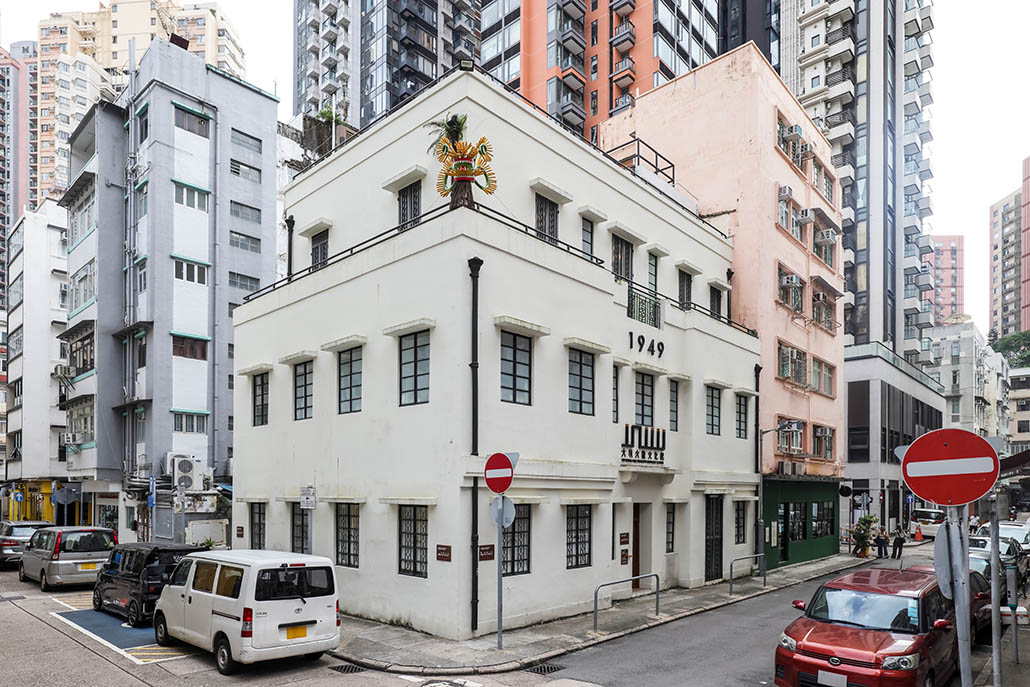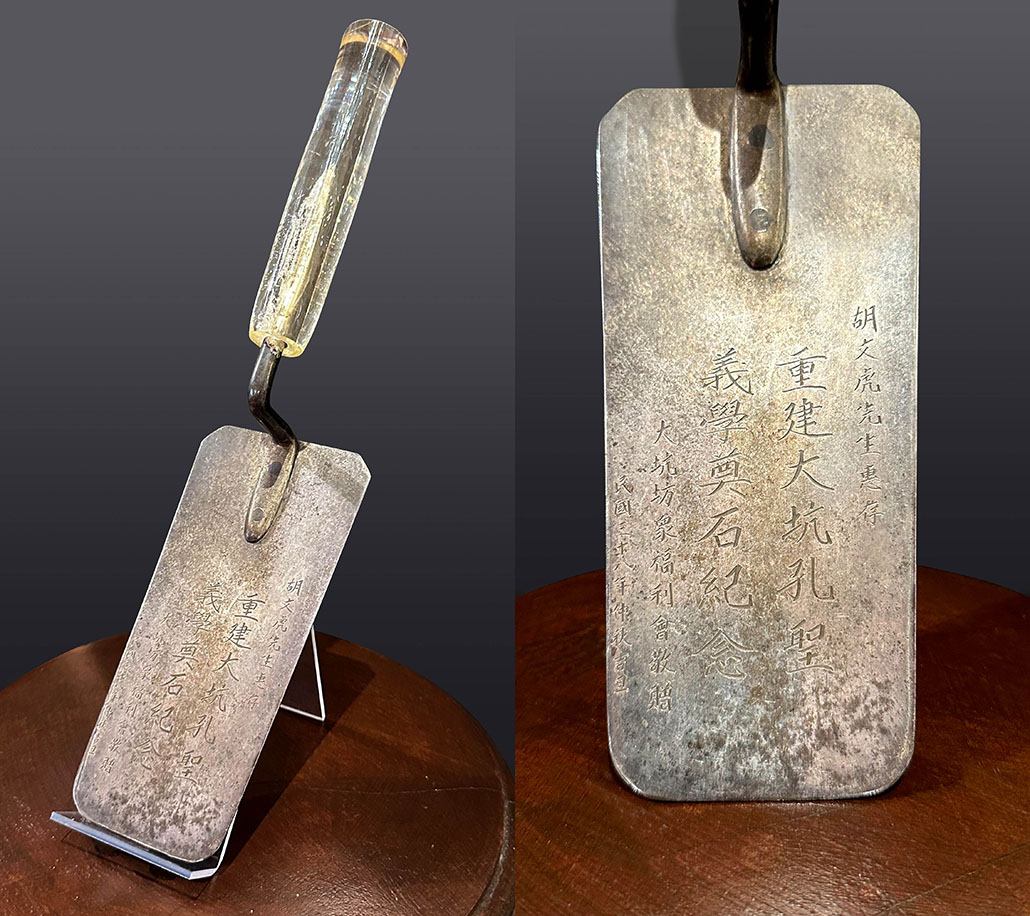Tai Hang was one of the early Chinese settlements in Hong Kong. After the Qing court announced the abolition of the Imperial Civil Service Examinations in 1905, Confucian classics faced the challenge of being removed from the curriculum. In 1907, the newspaper Zu Guo Wen Ming Bao, advocated setting up of a school to promote Confucianism in Guangzhou. Diu Chen-wan, a villager of Tai Hang, responded to the call and set out to establish a free school in Tai Hang. With the support of Chu Yuk-wan, a Chinese merchant, they raised funds for the construction of Hung Shing Yi Hok (literally, Confucius Free School for the Poor) at No. 12 School Street. The school was operated by Confucian Society, which was founded by Lau Chu-pak, a renowned Chinese merchant. “School Street” is named after the free school. This illustrates the role of Hong Kong’s early Chinese community in the establishment of Confucian free school.
During the Japanese Occupation, Hung Shing Yi Hok was severely damaged. After the war, the number of out-of-school children in Tai Hang soared. Through local donations by Tai Hang Residents’ Welfare Association, which 32,000 Hong Kong dollars was collected in the fundraising campaign, and 10,000 Hong Kong dollars from Aw Boon Haw, a Chinese entrepreneur and owner of Haw Par Mansion, in 1949, the free school was rebuilt on the same site. Aw’s son, Aw Hoe, also contributed and purchased desks and chairs for the school. The foundation ceremony was held on 14 August 1949, presided over by Aw Boon Haw. Also attending the ceremony was prominent retired football player and president of Tai Hang Residents’ Welfare Association, Lee Wai-tong. On 20 November of the same year, the opening ceremony of Hung Shing Yi Hok was held, with Aw Hoe, Lee Wai-tong and Sin Pui-kwan, President of Tai Hang Residents’ Welfare Association, as officiating guests. Outside the original main entrance is a stone plaque, with the inscription Chong Jian Ti Ji (tablet to commemorate the rebuilding), written by Lee Wai Tong in 1949 to commemorate the reconstruction of the free school.
Over the years, No. 12 School Street has been used as an education facility. In 1953, Hung Shing Yi Hok obtained government subsidies to officially establish Confucian Society Primary School. The school, however, was closed in 1978 due to insufficient enrolment. The building later served as the campus of Confucian Society Victoria English Primary School from 1984 to 1999, and was subsequently used to promote Confucian doctrine and Chinese culture. Between 2007 and 2010, it housed the office of Eastern District Children’s Choir of Eastern District Arts Council.
No. 12 School Street was revitalised into Tai Hang Fire Dragon Heritage Centre under the Revitalising Historic Buildings Through Partnership Scheme of Development Bureau to introduce the history and origin of the Tai Hang Fire Dragon Dance, and to promote the traditional craftsmanship and symbolism of the fire dragon.
Opening Hours:
Tuesday to Sunday: 10am - 6pm
Closed on Mondays, New Year's Day and the first three days of Chinese New Year, Good Friday, Christmas Day and Boxing Day
Address:
No. 12 School Street, Tai Hang, Causeway Bay, Hong Kong.
Enquiry Hotline:
(852) 2805 0012




